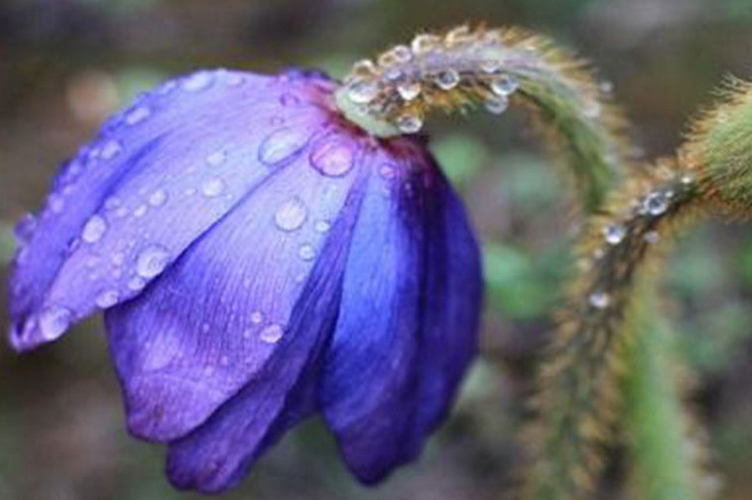Floral and Faunal Wealth of the Dragon Country
Nature has bestowed all its bounties on this Shangrila of enchanting valleys, winding rivers, placid lakes, exquisite flowers and snowy mountains. Bhutan is a treasure trove of biological diversity with an unparalleled wealth of flora and fauna, which can be attributed to the varied altitudinal and climatic conditions that prevails within the kingdom. From the alpine highlands right down to the tropical plains, our environment is as diverse as our culture. Bhutan is, today, one of the world’s top ten global hotspots, boasting a rich and varied biodiversity that few other countries can match. We have more than 5, 500 species of vascular plants, more than 770 species of avifauna and more than 165 species of mammals, many of them endemic to Bhutan. It is, to borrow a phrase almost overused by our visitors ‘a visual feast.’

Bhutan ranks amongst the top ten percent of highest species density (species richness per unit area) in the world. We also have the largest proportion of land under protected areas with as much as over 26 percent of the country’s area designated as national parks. More than 35 percent of the country’s area is under the protection of various forms of conservation management.
The large forested tracts of the country provide shelter to a wide variety of animals too. Our National Conservation Plan has records of as many as 178 species of animals, which include 24 internationally threatened species as well. Amongst others our forests are home to our National Butterfly – the Ludlow’s Bhutan Glory, along with our mammals – the Takin, our National Animal, golden langur, Bhutan giant flying squirrel, Himalayan marmot, pallas’ cat, golden cat, Himalayan goral, small-clawed otter, serow, bharal, red panda, marbled cat, leopard, Eurasian lynx, dhole, clouded leopard, Himalayan red fox, spotted linsang, Himalayan black bear, asian elephant, capped langur, large-eared pika, leopard cat, snow leopard, Himalayan musk deer, Chinese pangolin, Himalayan crestless, porcupine and the Tibetan wolf. In a rather fascinating turn of events, the royal Bengal tiger, generally known to be found only in tropical and sub-tropical areas, has been found to be residing at altitudes much above 4000 meters in Bhutan.
Bhutan also enjoys a reputation as a bird-watchers paradise. Our country boasts of as many as 675 species of birds which include the endangered black necked crane as well. Amongst many others, the birds one can find in Bhutan include the Raven – the National Bird of Bhutan, the endangered black necked crane, blood pheasant, blyth’s kingfisher, cutia, Himalayan owl, grey-crowned prinia, ward’s trogon, brown parrotbill, beautiful nuthatch, ferruginous duck, great barbet, jerdon’s baza, the critically endangered white-bellied heron, greater yellownape, Himalayan monal, Himalayan griffon, rufous-necked hornbill, Mrs. Gould’s sunbird, purple cochoa, satyr and temmnick’s tragopans, yellow-billed blue magpie, Tibetan snowcock, yellow-rumped honeyguide and wedge-billed babbler. Zhemgang district in particular, is a much sought after destination for avid bird-watchers because of the wide variety of birds that can be found there.
Bhutan has much to offer in terms of flora as well, with well over 7, 000 varieties of plants, 300 species of medicinal plants, 50 species of rhododendron, 600 species of orchids which are found at heights of 2, 100 meters, with some species surviving even at 3, 700 meters and above. The forests are full of trees like rhododendron, oak, walnut, sal, pine, oak, birch, maple, magnolia, laurel, yew, weeping cypress, popular, willow, ash, aspen, blue pine, hemlock, larch, fir, juniper and many others. Our National Flower, the Blue Poppy, can be found on rocky mountain terrain at altitudes of 4000 meters and above, at high passes almost all across the country. It flowers between late May and July. Interestingly, the existence of the Blue Poppy was not confirmed almost until the middle of the 20th century. For a very long time it remained a myth, much like the yeti or the abominable snowman as those in the west like to call it. It was sometime in 1933 that a British botanist, George Sherriff, found the fabled plant in the remote region of Sakteng in Eastern Bhutan.
The main reason why such a great variety of wildlife can still be found in Bhutan can definitely be attributed to the fact that the taking of lives, of any bird or animal is frowned upon here. So much so that someone found guilty of killing an endangered species can face a lifetime behind bars. Over here, life is life, irrespective of whether the life in question happens to have four legs or wings.
The large forested tracts of the country provide shelter to a wide variety of animals too. Our National Conservation Plan has records of as many as 178 species of animals, which include 24 internationally threatened species as well. Amongst others our forests are home to our National Butterfly – the Ludlow’s Bhutan Glory, along with our mammals – the Takin, our National Animal, golden langur, Bhutan giant flying squirrel, Himalayan marmot, pallas’ cat, golden cat, Himalayan goral, small-clawed otter, serow, bharal, red panda, marbled cat, leopard, Eurasian lynx, dhole, clouded leopard, Himalayan red fox, spotted linsang, Himalayan black bear, asian elephant, capped langur, large-eared pika, leopard cat, snow leopard, Himalayan musk deer, Chinese pangolin, Himalayan crestless, porcupine and the Tibetan wolf. In a rather fascinating turn of events, the royal Bengal tiger, generally known to be found only in tropical and sub-tropical areas, has been found to be residing at altitudes much above 4000 meters in Bhutan.
Bhutan also enjoys a reputation as a bird-watchers paradise. Our country boasts of as many as 675 species of birds which include the endangered black necked crane as well. Amongst many others, the birds one can find in Bhutan include the Raven – the National Bird of Bhutan, the endangered black necked crane, blood pheasant, blyth’s kingfisher, cutia, Himalayan owl, grey-crowned prinia, ward’s trogon, brown parrotbill, beautiful nuthatch, ferruginous duck, great barbet, jerdon’s baza, the critically endangered white-bellied heron, greater yellownape, Himalayan monal, Himalayan griffon, rufous-necked hornbill, Mrs. Gould’s sunbird, purple cochoa, satyr and temmnick’s tragopans, yellow-billed blue magpie, Tibetan snowcock, yellow-rumped honeyguide and wedge-billed babbler. Zhemgang district in particular, is a much sought after destination for avid bird-watchers because of the wide variety of birds that can be found there.
Bhutan has much to offer in terms of flora as well, with well over 7, 000 varieties of plants, 300 species of medicinal plants, 50 species of rhododendron, 600 species of orchids which are found at heights of 2, 100 meters, with some species surviving even at 3, 700 meters and above. The forests are full of trees like rhododendron, oak, walnut, sal, pine, oak, birch, maple, magnolia, laurel, yew, weeping cypress, popular, willow, ash, aspen, blue pine, hemlock, larch, fir, juniper and many others. Our National Flower, the Blue Poppy, can be found on rocky mountain terrain at altitudes of 4000 meters and above, at high passes almost all across the country. It flowers between late May and July. Interestingly, the existence of the Blue Poppy was not confirmed almost until the middle of the 20th century. For a very long time it remained a myth, much like the yeti or the abominable snowman as those in the west like to call it. It was sometime in 1933 that a British botanist, George Sherriff, found the fabled plant in the remote region of Sakteng in Eastern Bhutan.
The main reason why such a great variety of wildlife can still be found in Bhutan can definitely be attributed to the fact that the taking of lives, of any bird or animal is frowned upon here. So much so that someone found guilty of killing an endangered species can face a lifetime behind bars. Over here, life is life, irrespective of whether the life in question happens to have four legs or wings.
